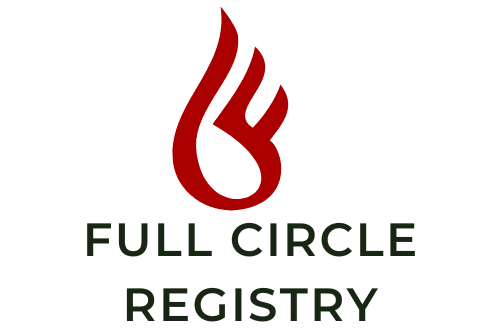How to Ensure Compliance with the UK’s Changing Building Safety Regulations?

Safety in the domain of construction is a primary concern for everyone involved, from architects and engineers to builders and clients. Not only does it bear the potential for human injury or loss of life, but it also carries significant financial and legal implications. As such, the building industry in England continually updates its safety regulations to reflect and adapt to changes in technology, materials, and building practices. Compliance with these regulations is essential for every person involved in the construction process, whether they are designing, building, or owning a property. Understanding these rules and how to meet their requirements can be a daunting task. This article aims to guide you through some key areas of compliance, providing insight into the current regulatory landscape in England.
Understanding the Building Safety Regulations in England
Before diving into the specifics of compliance, it’s important to have a basic understanding of the regulator and the regulations themselves. Building safety regulations in England are governed by the Building Regulations 2010, which is enforced by the Local Authority Building Control (LABC) and Approved Inspectors. They cover various aspects of construction, including structural integrity, fire safety, energy efficiency, and accessibility.
Have you seen this : What Are the Implications of BREXIT on UK Real Estate Investment?
The regulations apply to most new buildings and many alterations of existing buildings in England. They set out performance standards that buildings must achieve, rather than giving detailed specifications of how to meet these standards. This flexible approach allows you to choose how you will meet the requirements, which may vary depending on the specific project or circumstances.
Keeping Up with Changes in Regulations
The building safety regulations in England are subject to regular updates and amendments. These changes reflect advancements in technology, evolving insights into safety, and societal demands for more sustainable and accessible buildings. Therefore, staying abreast of these changes is crucial to ensure your projects remain in compliance.
Also to read : Can Community Gardens Increase Residential Real Estate Value?
You can keep track of changes in the regulations by regularly checking the UK government’s official website and by subscribing to newsletters from industry bodies such as the Chartered Institute of Building (CIOB) or the Royal Institute of British Architects (RIBA). In addition, attending industry events, webinars, and training courses can help you understand recent changes and their implications for your work.
Managing Fire Safety in Buildings
Of all the aspects of safety in construction, fire safety is one of the most critical. The tragic Grenfell Tower fire in 2017 led to a major review of fire safety in buildings in England, resulting in significant changes to the regulations. Under the new regulations, buildings that are 18 metres tall or higher or contain more than 10 homes must have a named person or people responsible for fire safety during the building’s design and construction stages.
This person, known as the ‘Accountable Person’, has a broad range of responsibilities, including creating a safety case report for the building, maintaining a safety certificate, and providing residents with a clear route to raise safety concerns. The regulations also specify materials and design standards to reduce the risk of fire, particularly in high-rise residential buildings.
Ensuring Compliance in Design and Construction
Compliance with building safety regulations begins at the design stage of a project. It’s the responsibility of the architects and engineers to ensure that their designs meet or exceed the regulations. This includes assessing the potential risks associated with the construction process and the completed building, and developing solutions to mitigate these risks.
During construction, the builders must follow the approved designs and use materials that comply with the regulations. They should also implement safety measures to prevent accidents and injuries on the construction site. The LABC or Approved Inspectors will inspect the work at various stages to verify compliance.
Even after the construction is complete, the building owner or manager must continue to comply with the regulations by maintaining the building and its safety features properly. They should also regularly review and update the building’s safety case report to reflect any changes in the building’s use or conditions.
The Role of Inspection and Enforcement
Inspection and enforcement play a vital role in ensuring compliance with building safety regulations. The LABC or Approved Inspectors will inspect your building work at various stages to check that it meets the regulations. If they find any non-compliance, they can issue an enforcement notice requiring you to correct the problems.
In some cases, they may also take legal action against you. For example, if you start building work without notifying the relevant authority or if you fail to comply with an enforcement notice. Therefore, it’s crucial to understand the inspection and enforcement processes and to cooperate fully with the inspectors.
In conclusion, compliance with the UK’s changing building safety regulations requires a multifaceted approach, involving understanding the regulations, staying up-to-date with changes, managing fire safety, ensuring compliance in design and construction, and cooperating with the inspection and enforcement processes. This not only ensures the safety of your buildings but also protects you against legal and financial risks.
The Role of the ‘Golden Thread’ in Building Safety
The concept of the ‘Golden Thread’ of building safety has become a vital element in the regulatory landscape in England. Introduced by the Building A Safer Future report following the Grenfell Tower tragedy, the ‘Golden Thread’ refers to a digital record of all building information, from inception through to occupation.
This includes details of the design, construction, and any changes made during the building’s life cycle. The ‘Golden Thread’ aims to ensure that a building’s safety information is preserved and updated accurately. This information should be readily available to the accountable person, the building owners, and the safety regulator.
The ‘Golden Thread’ is especially important for higher risk buildings, such as high-rise residential buildings. By providing a clear, accessible record of how safety has been considered throughout the building’s life cycle, it can help identify potential risks and enable timely, effective responses to safety concerns.
The principal designer plays a key role in creating and maintaining the ‘Golden Thread’. They should ensure that all relevant information is recorded and kept up to date, and provide access to this information to all those who need it. This includes the accountable person, who is responsible for managing fire safety, and the relevant building control body, which is responsible for checking compliance with the regulations.
The Importance of Building Control Approval
Obtaining building control approval is a critical step in ensuring compliance with building safety regulations in England. The building control approval process involves an independent assessment of your building plans by the LABC or Approved Inspectors to check that they comply with the Building Regulations 2010.
Building control approval is required for most new buildings and many alterations to existing buildings. It’s also essential for risk building projects, such as high-rise residential buildings. Without the necessary approval, you may be unable to start your building work, and you may also face legal action if you proceed without it.
To obtain building control approval, you should submit detailed plans of your proposed building work to the relevant building control body. These plans should demonstrate how your project will meet the regulations, considering factors such as structural integrity, fire safety, energy efficiency, and accessibility.
The building control body will assess your plans and may request additional information or changes to ensure compliance. Once they are satisfied that your plans meet the regulations, they will issue a building control approval notice. After this, they will inspect your work at key stages of construction to verify that it aligns with the approved plans and complies with the regulations.
Conclusion
Ensuring compliance with the UK’s changing building safety regulations is a complex task, given the constant evolution of technology, materials, and building practices. However, by understanding the regulations, keeping up-to-date with changes, managing fire safety effectively, complying with the design and construction requirements, and cooperating with the inspection and enforcement processes, compliance can be achieved.
Central to this is the concept of the ‘Golden Thread’, ensuring a comprehensive digital record of all building information, and the importance of obtaining building control approval. Both these aspects are pivotal in maintaining and demonstrating compliance with building safety regulations in England.
Moreover, the role of the accountable person in managing fire safety in high rise buildings, and the principal designer in maintaining the ‘Golden Thread’, cannot be understated. These roles are vital in ensuring the safety of buildings and their occupants, thereby reducing the potential legal and financial risks associated with non-compliance.
In conclusion, achieving compliance with the UK’s building safety regulations is a shared responsibility that requires a comprehensive understanding of the regulatory landscape, a proactive approach to compliance, and close cooperation with key stakeholders. By following these principles, we can make significant strides towards creating safer buildings in the UK.
